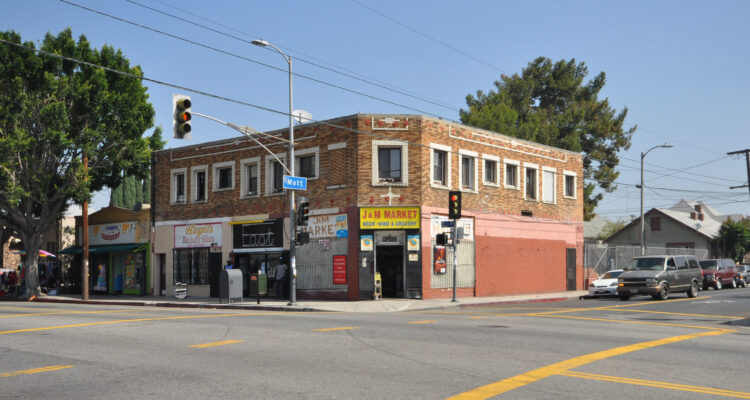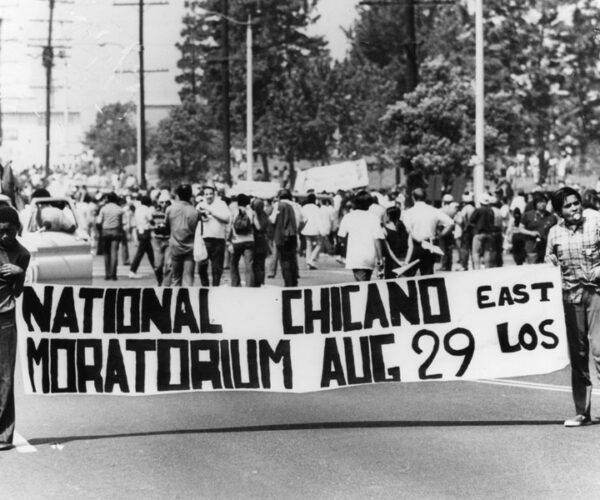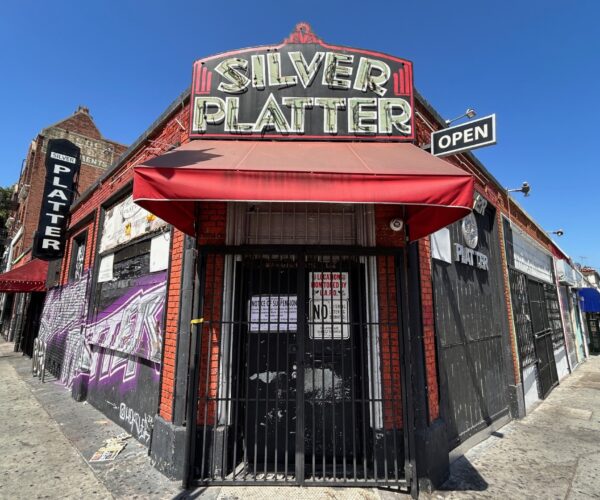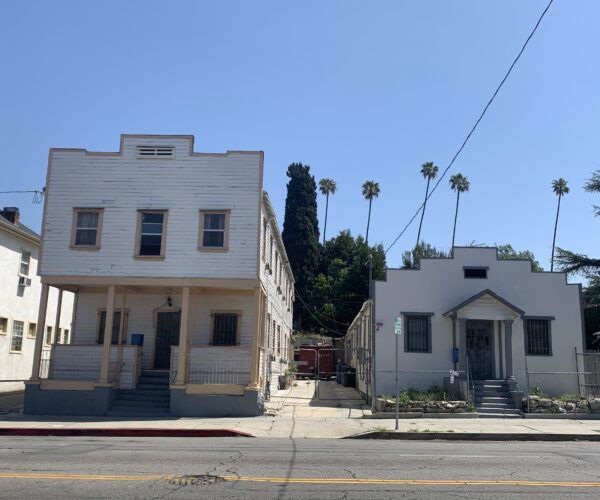
Place
Brown Beret Headquarters
This modest building served as one of the organization's most significant headquarters.
Place Details
Address
Get directions
Year
Style
Designation
Property Type
Community
Update: In October 2020, the Brown Beret Headquarters was Determined Eligible by the National Park Service for listing in the National Register of Historic Places. It was not officially listed on the National Register due to owner opposition. The building is listed on the California Register and is eligible for local designation.
Founded in Los Angeles in the late 1960s, the Brown Berets were an influential community-based social justice organization that played a leading role in the Chicano Civil Rights Movement of the 1960s and 1970s.
The Brown Berets were originally formed as the Young Citizens for Community Action in 1966 and were active in Los Angeles’ Eastside neighborhoods. The name was changed to Young Chicanos for Community Action in 1967. Members wore brown berets as a symbol of unity and resistance, which inspired the organization’s third name.
The Brown Berets took on a range of social and political issues that plagued the Mexican American and Chicanx barrios of the Eastside in various sectors of life, including educational inequality, healthcare access, police brutality, and wartime casualties. They were active predominantly in the unincorporated area of East Los Angeles, though they also had a strong presence in Lincoln Heights and Boyle Heights.
In addition to their successful marches and rallies one of the Brown Berets' most important accomplishments was the establishment of El Barrio Free Clinic on Whittier Boulevard in 1969.
At the height of their activities in the ‘60s and ‘70s, the organization relocated their headquarters several times as their presence became known to government official and L.A. County Sheriff’s Department, who thought them too radical. For example, the Berets suspected a firebombing of one of their many headquarter locations was conducted by local officers. Their meeting spaces continued to be targets of raids as their activism expanded throughout the community.
The modest building at 2639-41 E. Fourth Street was one of the organization's most significant headquarters, as it served as the Berets' primary meeting location during the planning of the 1970s Chicano Moratorium. The building stands directly across from Theodore Roosevelt High School on Mott Street. The proximity of Beret Headquarters to the high school underscored youth participation in the Chicano Movement.
Built in 1923, the building retains its original design and floorplan as a mixed-use vernacular building, though it has been altered over time. The Brown Beret Headquarters occupied ground floor storefront space for an indefinite period of time after 1968, as the organization faced continuous threats from law enforcement.



